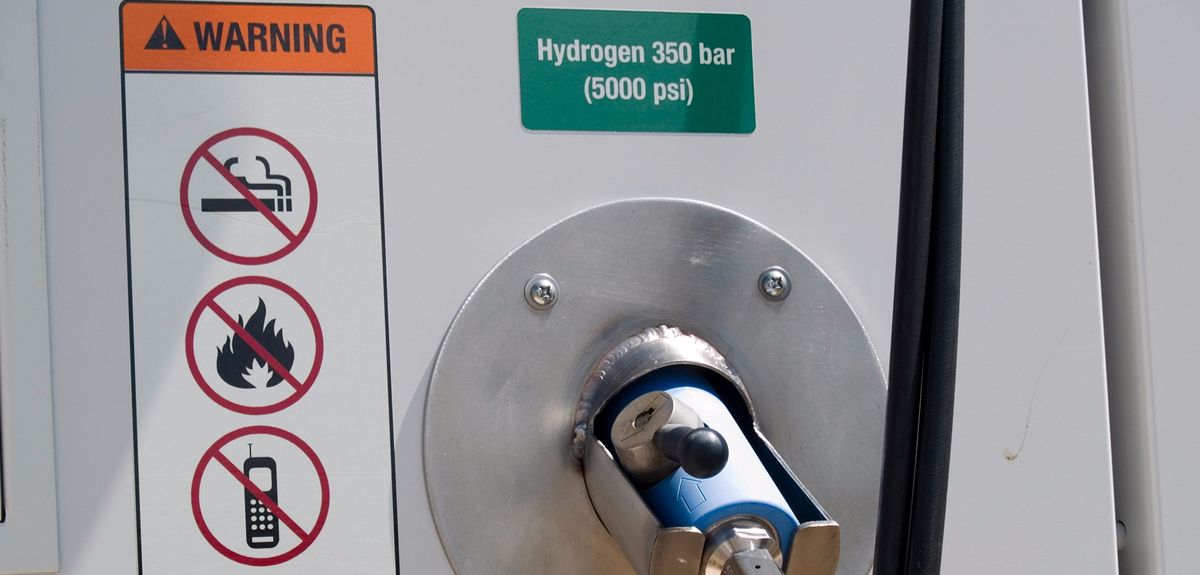
Image credit: Shutterstock
Safe new storage method could be key to future of hydrogen-powered vehicles
Hydrogen is often described as the fuel of the future, particularly when applied to hydrogen-powered fuel cell vehicles. One of the main obstacles facing this technology – a potential solution to future sustainable transport – has been the lack of a lightweight, safe on-board hydrogen storage material.
A major new discovery by scientists at the universities of Oxford, Cambridge and Cardiff in the UK, and the King Abdulaziz City for Science and Technology (KACST) in Saudi Arabia, has shown that hydrocarbon wax rapidly releases large amounts of hydrogen when activated with catalysts and microwaves.
This discovery of a potential safe storage method, reported in the Nature journal Scientific Reports, could pave the way for widespread adoption of hydrogen-fuelled cars.
Study co-author Professor Peter Edwards, who leads the KACST-Oxford Petrochemical Research Centre (KOPRC), a KACST Centre of Excellence in Petrochemicals at Oxford University, said: 'This discovery of a safe, efficient hydrogen storage and production material can open the door to the large-scale application of fuel cells in vehicles.'
Co-author Dr Tiancun Xiao, a senior research fellow at Oxford University, said: 'Our discovery – that hydrogen can be easily and instantly extracted from wax, a benign material that can be manufactured from sustainable processes – is a major step forward. Wax will not catch fire or contaminate the environment. It is also safe for drivers and passengers.'
Co-author Professor Hamid Al-Megren, from the Materials Research Institute at KACST, said: 'This is an exciting development – it will allow society to utilise fossil fuels or renewable-derived wax to generate on-board hydrogen for fuel cell applications without releasing any carbon dioxide into the air.'
Hydrocarbons are natural, hydrogen-rich resources with well-established infrastructures. The research team has developed highly selective catalysts with the assistance of microwave irradiation, which can extract hydrogen from hydrocarbons instantly through a non-oxidative dehydrogenation process. This will help unlock the longstanding bottleneck hindering the widespread adoption of hydrogen fuel technology.
Co-author Professor Angus Kirkland, from the Department of Materials at Oxford University and Science Director at the new electron Physical Science Imaging Centre (ePSIC) at Harwell Science and Innovation Campus, described the breakthrough as an exemplar of how Oxford is able to respond to key academic and industrial problems by using interdisciplinary resources and expertise.
Co-author Professor Sir John Meurig Thomas, from the Department of Materials Science and Metallurgy at the University of Cambridge, said the work could be extended so that many of the liquid components of refined petroleum and inexpensive solid catalysts can pave the way for the generation of massive quantities of high-purity hydrogen for other commercial uses, including CO2-free energy production.
Professor Edwards added: 'Instead of burning fossil fuels, leading to CO2, we use them to generate hydrogen, which with fuel cells produces electric power and pure water. This is the future – transportation without CO2 and hot air.'
The paper 'Wax: A benign hydrogen-storage material that rapidly releases H2-rich gases through microwave-assisted catalytic decomposition' is published in the journal Scientific Reports.
 Expert Comment: Chatbot-driven sexual abuse? The Grok case is just the tip of the iceberg
Expert Comment: Chatbot-driven sexual abuse? The Grok case is just the tip of the iceberg
 New study finds that stopping weight-loss drugs is linked to faster regain than ending diet programmes
New study finds that stopping weight-loss drugs is linked to faster regain than ending diet programmes